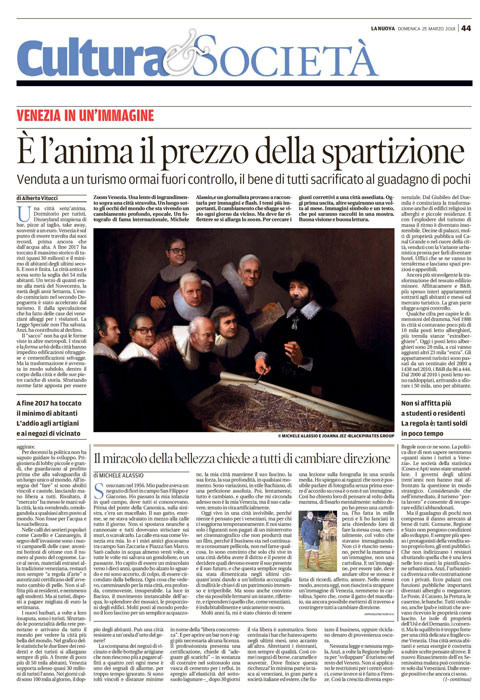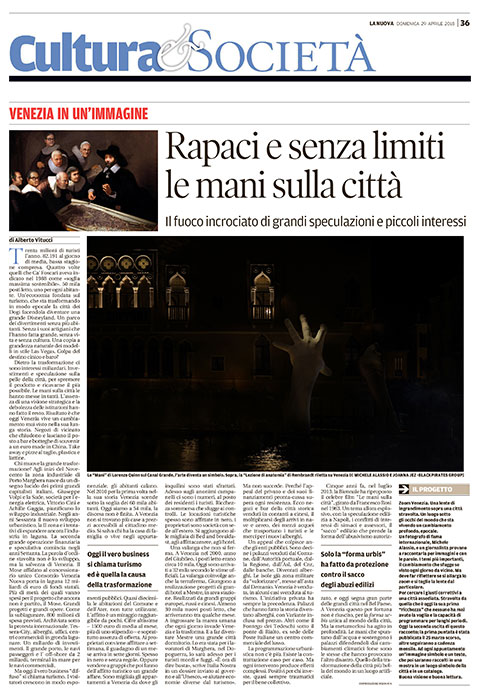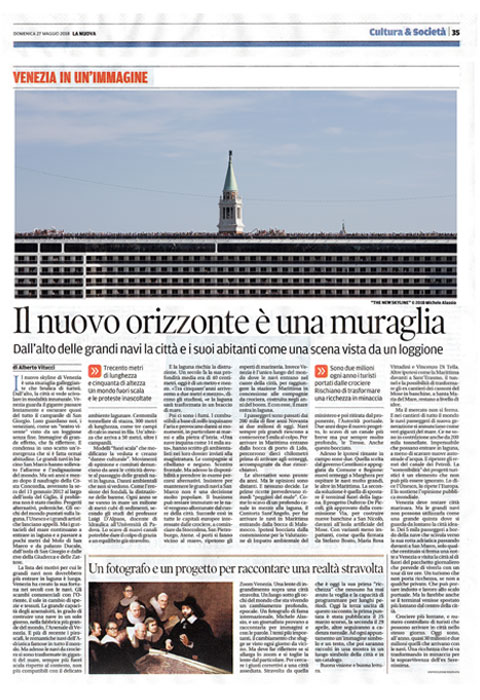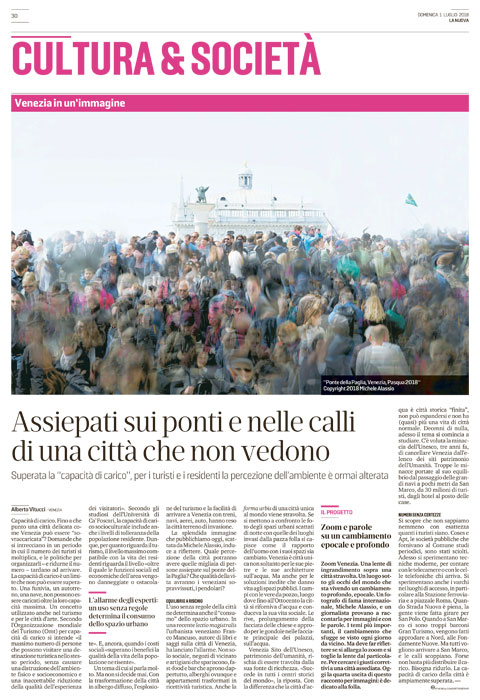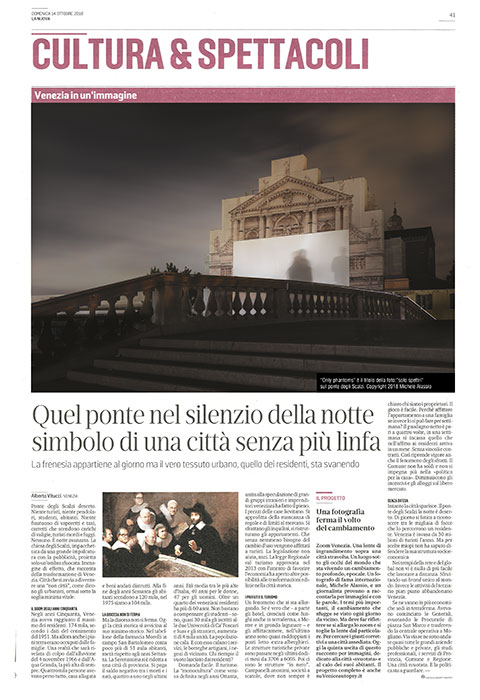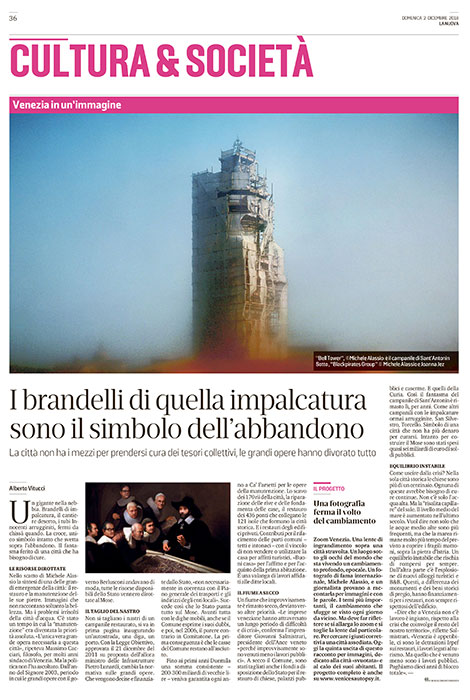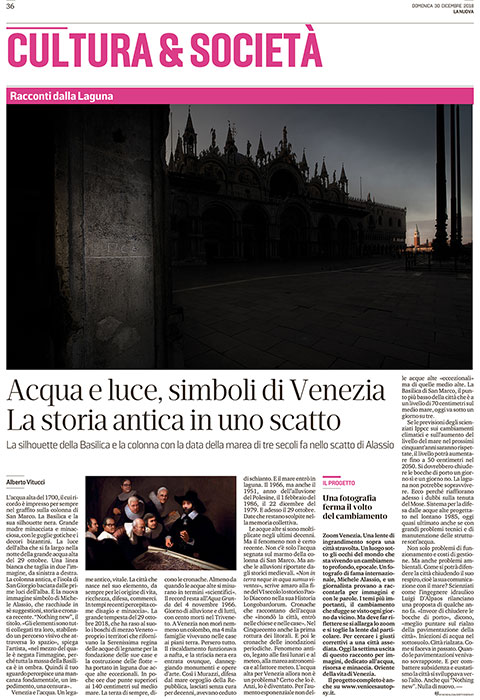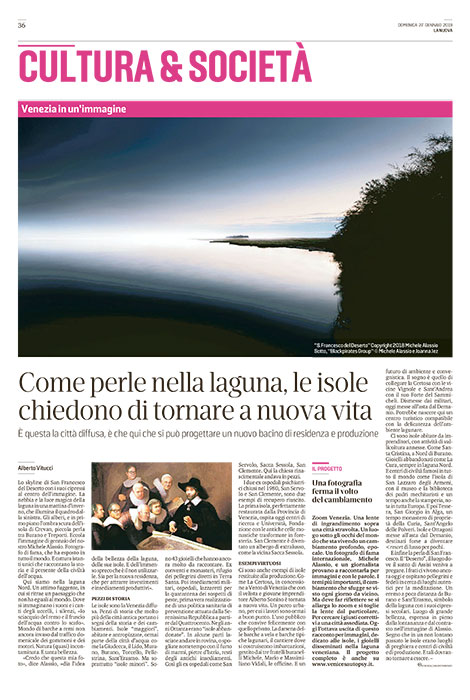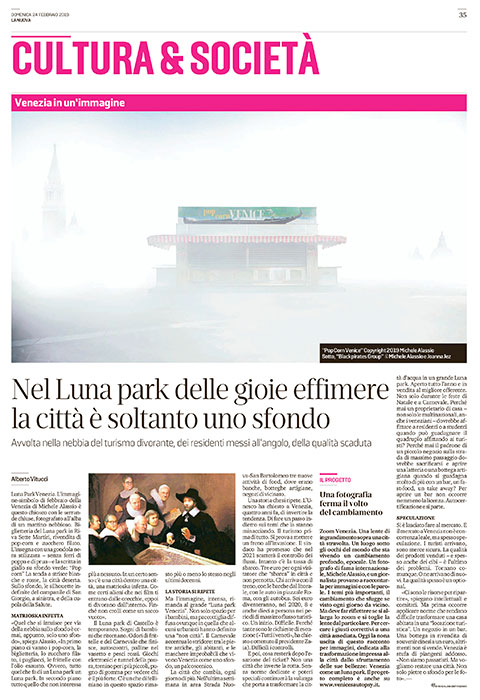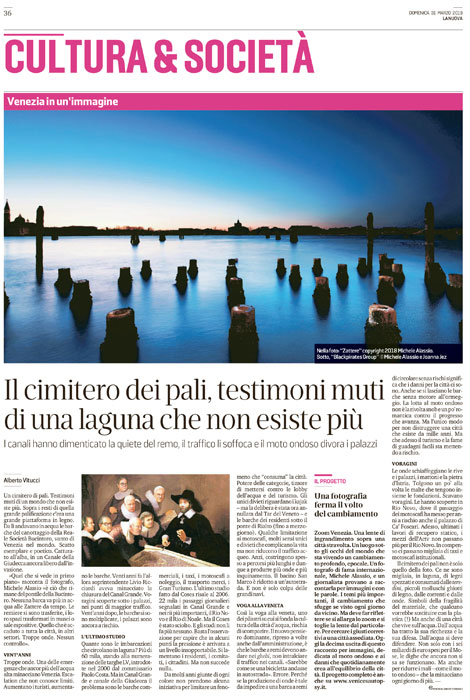I'm Michele Alassio. I am a professional photographer and an artist represented by the best art galleries. I have had the honor of holding personal exhibitions at the MoMA, Rejna Sofia and other Museums around the world.
But it is not of my artistic work that I want to talk to you about, but of the city where I was born and still live, Venice.
Venice welcomes more than 32 million tourists every year. It is a unique city for many reasons: its urban form, its extraordinary past of world power, it has not undergone any urban changes and is presented today, intact, as it was presented 500 years ago, for its unrepeatable and extraordinary artistic heritage that, like a small casket, it guards. As you can see there are many reasons that make it unique and desirable.
But Venice is a unique city for another reason: it is the only city in the world that has seen its capacity to generate wealth expand immensely and, at the same time, has seen its residents disappear.
Any city grows, in terms of population, when it is at the center of economic growth.
Venice does not.
In the year of my birth, 1956, it counted 156.834 inhabitants, on the day of my 62nd birthday, last August, it fell below 53,000.
Two thirds of the residents have left.
Forever.
So, In December of last year, when I began thinking about creating a new series of photographs of Venice that would repeat the success of the series "Venice" which I edited 12 years ago, I did not feel like making images of pure beauty, and I bound the realization of the series to the fact that my photographs should try to give an image to the problems of the city, and that the series had to be for the people, shared as much as possible and, although limited in its edition, aimed at a wider audience.
This project met immediately the enthusiasm and the adhesion of a great local newspaper, the "La Nuova Venezia", which began publishing on the first page of their Culture section my photographs that would interpret the articles that the journalist Alberto Vitucci writes on the various problems of the city.
The first provocative image of my new series, provocative as the title of the new series "Venice's Autopsy" suggests, is not a photograph, but an elaboration of the Rembrandt painting "Prof. Tulp's anatomy lesson".
We have replaced the faces of professors with those of the last mayors and governors, and the corpse with that of the map of Venice because there is one thing that unites all these characters, and that is the degradation and depopulation of the city that they have been administering for 50 years.
None of them could or did not do anything to save the residents, as if it were not the residents, the existence of a population, its traditions, its culture, the only thing that distinguishes a city from an artificial, false Luna Park, which is exactly what Venice, thanks to their inaction, has become.

